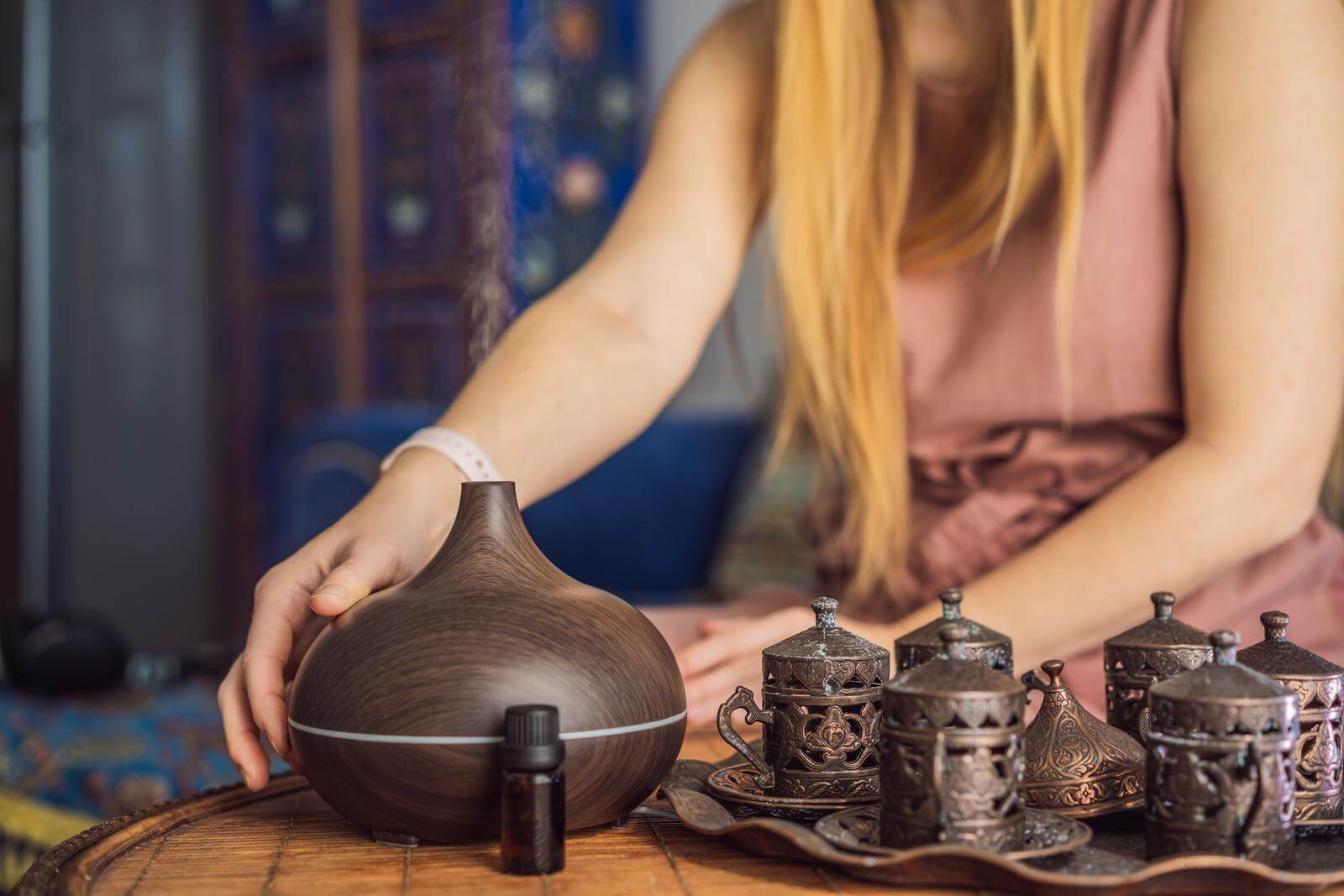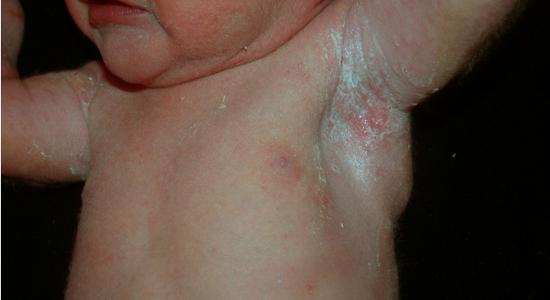
A yeast infection on the nose is often just a skin yeast infection that happens to occur within the nose. The genus of yeast known as Candida causes many yeast infections. And, it may be if you have a rash of some kind on your nose it is Candida that caused it.
However, it is important to correctly diagnose a rash; Candida will not be the causal agent behind all rashes.
If you feel you have a yeast infection in the sinuses around the nose, it may not be Candida that is causing it. A fungal infection of the nasal sinuses is known as fungal rhinosinusitis.
Research indicates that this condition can be caused by fungal pathogens other than Candida; e.g., Aspergillus. Thus, you may not have Candida in your nose at all.
Concerning yeast infections on the nose, to accurately diagnose the causal agent behind a rash, a laboratory test may have to be done. Yet, if you have had a problem with yeast infections, it may be more plausible that Candida is the cause of the rash on your face.
Yet, again, without a medical examination it may be impossible to know for sure the agent causing the rash.
What may be helpful, is taking a home yeast infection test. This test, adapted from a test developed by the late Dr. William Crook (a pioneer of yeast-related health issues and author), can be taken for free on Candida Hub.
Using this test, you can get a better idea of your propensity to have Candida related health problems. It could give you a better understanding of what is actually going on with your nose. The link to this page on Candida Hub is provided directly below.
A 1/2 Day & Yeast is Gone!
Linda Allen suffered from yeast infections for years. Through researching natural medicine & Candida, she found an efficacious solution!
Linda is one expert you want on your side! Let her show you how to get rid of a superficial yeast infection in just 12 hours; AND, keep it gone!
A 60-day, 100% money back guarantee is provided.
Visit Official Site!A Case Report on a Nose Yeast Infection
One interesting study, presented a case report of a woman with a yeast infection on the nose / face. The study also presented a picture of the nose yeast infection. This study was published in Archives of Dermatology [142.7 (2006): 927-947].
According to this study, the presence of Candida albicans (C. albicans) on the face is unusual; yet, it has been described.
The case report was of a 66 year old woman who had rash of papules (a small, raised, solid pimple or swelling; they are typically inflamed but do not produce pus) and pustules (a small blister or pimple on the skin containing pus) on her face. A few lesions appeared first around her nose then spread to the eyelids and cheeks.
The woman said she did not have a history of rosacea (a condition causing redness and often small, red, pus-filled bumps on the face) and seborrheic dermatitis (a.k.a. seborrheic eczema; a skin condition that causes red skin and scaly patches). The woman also denied the regular use of cosmetics or topical steroids.
The woman had no signs of genital candidiasis, oral thrush, or other infections and had a competent immune system.
The direct microscopic examination of skin scrapings showed yeast cells and pseudohyphae (elongated yeast cells). Cultures showed that C. albicans was present.
The woman was given a 2 week treatment of itraconazole of 200mg per day. With the treatment, the lesions on the face and nose cleared completely. At a 2 month follow up visit the patient was still free from lesions and the laboratory tests showed no Candida present.
Eliminate Bacterial Vaginosis & Vaginal Odor
Jennifer O’Brien is one prominent expert on BV that knows how to get rid of vaginal odor. BV is a common infection that you don’t have to put up with.
Jennifer will show you how to naturally eliminate vaginal odor in just 3 days.
A 60-day, 100% money back guarantee is provided.
Visit Official Site!Perioral Dermatitis & Nose Candidiasis

Perioral dermatitis (PD) is an infection of the skin around the mouth, and can include the skin around the nose and eyes (Tolaymat, Hall; 2020). If you have a rash around your mouth, and your nose is affected as well; it could be a case of PD.
A study, published in the American Journal of Clinical Dermatology [15.2 (2014): 101-113], discussed PD. The study states that PD is a chronic disease of the skin that is typically characterized by abnormally red papules or pustules that are not itchy in the area around the mouth.
If the lesions of PD involve the area around the nose and around the eyes, the term periorificial dermatitis can be used to describe this condition.
The study reports that PD often happens to women who are between the ages of 16 and 45 years. PD also can happen to children between the ages of 7 months and 13 years. Additionally, the study reports that the frequency of occurrence for PD is not much different between genders or ethnic groups.
The exact way this disease occurs, at the time of this study’s writing, was unknown. Yet, the study reports that topical corticosteroid use on the face often happens before PD develops. Additionally, long term use of corticosteroids is a risk factor for PD.
The study also states that C. albicans is a possible causal agent for PD. Demodex species and Fusiform bacteria can also cause this condition.
Some other causes, not involving pathogens, include: fluoride and anti-tartar toothpaste, cosmetics, sunscreens, moisturizers, and even chewing gum.
Another set of possible causes for PD includes some of the following: hormonal factors (taking contraceptive pills, premenstrual flare, and pregnancy), kidney transplant, skin barrier dysfunction, and Crohn’s disease.
The study reports that there is a long list of possible causes for PD; therefore, it is able to be assumed that PD is the result of a combination of factors. Thus, Candida by itself may not be able to cause this.
Clair Goodall: Author & Nature Lover
Clair Goodall is a bee-obsessed natural medicine convert from Minnesota. She is one expert you might want to know more about!
Clair will help you protect you and your family from toxic products and chemicals and help you discover solutions from nature.
Also, Clair’s book is backed by a 60-day, 100% money back guarantee
Visit Official Site!Candida & the Sinuses Around the Nose

Fungal rhinosinusitis (FRS) is a condition caused by fungal infections of the paranasal sinuses. The paranasal sinuses are air filled spaces within the bones of the skull and face.
These sinuses are centered on the nasal cavity. The paranasal sinuses open into the nasal cavity and make mucus to keep the nose from drying out.
A study, describing FRS, was published in the International Journal of Otolaryngology [2012 (2012)]. The study states that FRS has been known for several hundred years; yet, it was not until recently that FRS has been further defined. The disease is classified as either being invasive or non-invasive.
If FRS has progressed to invade the tissue beneath the mucus membranes of the sinus, resulting in tissue destruction, the condition is invasive. Invasive FRS should have a medical doctor examine this condition.
Non-invasive FRS Consists of the Following Criteria:
- Fungus Ball(s): This is an entangled mass of fungi that presents a minimal inflammatory reaction. No tissue invasion or small area inflammatory reaction occurs.
- Allergic FRS: Causes the presence of eosinophilic mucin; i.e., mucus mixed with eosinophils (a type of disease fighting white blood cell), inflammatory cells, and some fungi.
- Mixed Fungus Ball / Allergic FRS: When both fungus ball(s) and allergic FRS are present.
A study, published in The Southeast Asian Journal of Tropical Medicine and Public Health [41.2 (2010): 442], explained the prevalence of Candida in causing FRS.
According to this study, many different species of fungi cause FRS. The study stated it is important to understand that hyphal (germ tube) organisms are responsible for the vast majority of Cases (and, some Candida species form hyphae).
This study was of invasive and non-invasive FRS diagnosed from surgical material. Laboratory cultures revealed fungal organisms in 37 of 87 cases. And, in regards to Candida, 6 FRS cases were the result of C. albicans, 2 resulted from C. tropicalis, and 1 case from C. krusei.
Aspergillus was the genus of fungi that was responsible for most cases of FRS. Therefore this study shows that Candida may not be the most common causal agent behind FRS.
Natural Help with Nose Yeast Infections

If you have a yeast infection on your nose (and not inside of it), Linda Allen is someone you may want to know about. Linda Allen has developed a natural, 12 hour cure for superficial yeast infections--such as one on the nose.
And, if your yeast infection is in your nose, Linda Allen may also be able to provide some assistance; although you may not be able to get rid of the infection in only 12 hours like you would if the infection was outside the nose.
Linda Allen gained her expertise in Candida many years ago when she herself became the victim of a systemic Candida infection. This systemic infection caused a variety of unusual health problems--in addition to repeat yeast infections.
And, despite Linda’s attempts to find a solution with doctors, nothing she was told to do seemed to work.
Linda eventually learned that her unusual health problems were the result of systemic Candidiasis--a yeast infection that had developed to a good degree in her body.
After learning the true cause of her unusual health problems, she began to research Candida extensively. Eventually, she developed a natural solution she hoped would get rid of her systemic Candida.
Linda would spend about a year refining her new system before she tried it on herself. And, when she did, she found that her health eventually returned and her repeated yeast infections stopped.
Linda even had some physicians run tests on her to verify if her new treatment worked; and, the test results showed that all the indicators of infection were gone.
Linda since went on to write a book detailing her natural protocols to get rid of systemic yeast infections. If you have a yeast infection in your nose, Linda’s book may be able to help you use natural medicine to arrive at a cure (if it is Candida that is causing your infection); as it addresses systemic yeast infections.
In her book, Linda also describes how to naturally get rid of superficial yeast infections in just 12 hours.
If you have a yeast infection on your nose, Linda’s natural system should be able to clear up your nose skin in 12 hours time. And, it will be done using a safe, natural method.
In addition to an efficacious book, Linda also has a reputable publisher (a subsidiary of the United States based firm Keynetics Incorporated) that guarantees her book with a 60 day, 100% money back guarantee.
If you decide to try Linda’s book, you are protected by her publishers generous refund period. Which is significantly longer than 12 hours! And, Linda’s book is available as a digital ebook; which can be downloaded immediately and you can start using it right away.
To learn more about Linda’s personal journey to freedom from Candida, to find out more about her book, or to see reviews of others who tried her book; you can get more information at Linda Allen’s website.
Author: Mr. Nicholas Gross

Nick Gross is a natural medicine enthusiast who has been researching and writing about natural medicine since 2008. Nick is primarily a web developer but also researches and authors written and video content about natural health. Nick has a bachelor’s degree in Management Information Systems from the University of Northern Iowa.
Disclaimer
The information on this website is not a prescription for anyone. This information is for informational or educational purposes only, and is not a substitute for professional medical advice or consultations with healthcare professionals.
Affiliate Disclosure
Some of the links provided on this website are affiliate links. When a purchase is made through these links, Candida Hub earns money from commission. This helps to keep the website up and helpful to people for free. Thank you for any support!
Stay Up to Date
If you enjoyed this article, consider following / liking our Facebook page. This page is primarily utilized to alert followers of new articles that are put on Candida Hub. Candida related news is also discussed. While you are there, you can see what has been more recently added to Candida Hub.
SOURCES:
- https://doi.org/10.1001/archderm.142.7.945 -- Massone, Cesare, Erika Propst, and Daisy Kopera. "Rosacealike Dermatitis With Candida albicans Infection." Archives of Dermatology [142.7 (2006): 927-947].
- https://www.ncbi.nlm.nih.gov/books/NBK525968/ -- Leila Tolaymat; Matthew R. Hall. “Perioral Dermatitis.” StatPearls Publishing LLC [2020].
- https://doi.org/10.1007/s40257-014-0067-7 -- Tempark, T., and T. A. Shwayder. "Perioral dermatitis: a review of the condition with special attention to treatment options." American Journal of Clinical Dermatology [15.2 (2014): 101-113].
- https://doi.org/10.1155/2012/684835 -- Montone, Kathleen T., et al. "Fungal Rhinosinusitis: A Retrospective Microbiologic and Pathologic Review of 400 Patients at a Single University Medical Center." International Journal of Otolaryngology [2012 (2012)].
- https://pubmed.ncbi.nlm.nih.gov/20578529/ -- Soontrapa, P., et al. "Fungal rhinosinusitis: a retrospective analysis of clinicopathologic features and treatment outcomes at Ramathibodi Hospital." The Southeast Asian Journal of Tropical Medicine and Public Health [41.2 (2010): 442].
- https://www.ncbi.nlm.nih.gov/books/NBK525968/ -- Leila Tolaymat; Matthew R. Hall. "Perioral Dermatitis." StatPearls Publishing LLC. (2022)
Image used under Creative Commons Liscense







